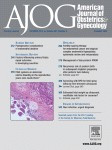Halaska M, Maxova K, Sottner O, Svabik K, Mlcoch M, Kolarik D, Mala I, Krofta L, Halaska MJ. Am J Obstet Gynecol. 2012 Oct;207(4):301.e1-7. doi: 10.1016/j.ajog.2012.08.016. Epub 2012 Aug 16. IF: 3.486

Department of Obstetrics and Gynaecology
Abstract
OBJECTIVE: The objective of the study was to compare recurrence and complication rates for sacrospinous fixation (SSF) and prolene mesh techniques for the primary treatment of posthysterectomy vaginal vault prolapse. STUDY DESIGN: Patients undergoing surgery for vault prolapse were included in a multicenter, randomized, controlled study comparing SSF or total mesh (Prolift; Gynecare/Ethicon, Somerville, NJ). The examination included pelvic organ prolapse quantification, urodynamics, ultrasound, and quality-of-life (QoL) questionnaires before and 3 and 12 months after surgery. RESULTS: Of 168 randomized patients, 83 underwent SSF and 85 mesh repair. Prolapse recurrence after 12 months occurred in 39.4% of the SSF group and in 16.9% of the mesh group (P = .003). The mesh exposure rate was 20.8%. No difference in QoL improvement as well as of de novo stress urinary incontinence and overactive bladder onset was found. CONCLUSION: Mesh exposure occurrence was balanced against a lower prolapse recurrence rate in the patients undergoing mesh surgery compared with those undergoing SSF.
-Michaela Kotrová-
